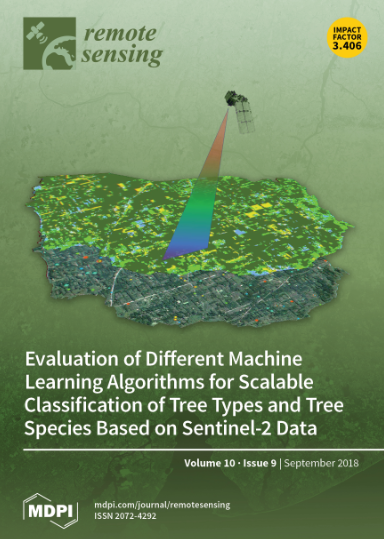绘制奥运会城市规划对地表温度的影响图:利用大地遥感卫星系列和谷歌地球引擎进行估算
IF 4.2
2区 地球科学
Q2 ENVIRONMENTAL SCIENCES
引用次数: 0
摘要
奥运会是一项体育盛事,也是主办城市城市发展的催化剂。在这项研究中,我们利用遥感和地理信息系统(GIS)技术来研究奥运基础设施对城市地区地表温度的影响。本研究利用 Landsat Series Collection 2 Tier 1 Level 2 数据和谷歌地球引擎(GEE)提供的云计算,考察了在不同历史时期和位置类型下各种形式的奥运设施城市规划的影响,具体如下:单中心、多中心、外围和集群奥运环。GEE 代码适用于从 2024 年巴黎奥运会到 1976 年蒙特利尔奥运会。不过,本文特别关注巴黎 2024 年、东京 2020 年、里约 2016 年、北京 2008 年、悉尼 2000 年、巴塞罗那 1992 年、首尔 1988 年和蒙特利尔 1976 年这几个具有代表性的案例。本研究不仅关注获得绝对地表温度(LST),更关注特大活动基础设施对缓解或增加城市热量的相对影响。因此,研究采用了局部归一化地表温度(NLST)。在一些城市(巴黎、东京、北京和巴塞罗那),奥运规划导致了绿地的开发,形成了 "绿点",从而使气温低于平均水平。不过,需要注意的是,在建筑密集的地区,如奥运村和奥运场馆周边地区,气温变化很大,可能成为 "热点"。因此,重要的是要认识到不同规划类型的奥运基础设施会对城市热岛产生不同的影响,而多中心和集群式奥运环岛类型会显示出缓解效应。这项研究为云计算方法做出了贡献,该方法可为未来的奥运会更新或适用于其他大型活动,并利用广泛可用的遥感数据源来研究特定的城市规划背景。本文章由计算机程序翻译,如有差异,请以英文原文为准。
Mapping the Influence of Olympic Games’ Urban Planning on the Land Surface Temperatures: An Estimation Using Landsat Series and Google Earth Engine
The Olympic Games are a sporting event and a catalyst for urban development in their host city. In this study, we utilized remote sensing and GIS techniques to examine the impact of the Olympic infrastructure on the surface temperature of urban areas. Using Landsat Series Collection 2 Tier 1 Level 2 data and cloud computing provided by Google Earth Engine (GEE), this study examines the effects of various forms of Olympic Games facility urban planning in different historical moments and location typologies, as follows: monocentric, polycentric, peripheric and clustered Olympic ring. The GEE code applies to the Olympic Games that occurred from Paris 2024 to Montreal 1976. However, this paper focuses specifically on the representative cases of Paris 2024, Tokyo 2020, Rio 2016, Beijing 2008, Sydney 2000, Barcelona 1992, Seoul 1988, and Montreal 1976. The study is not only concerned with obtaining absolute land surface temperatures (LST), but rather the relative influence of mega-event infrastructures on mitigating or increasing the urban heat. As such, the locally normalized land surface temperature (NLST) was utilized for this purpose. In some cities (Paris, Tokyo, Beijing, and Barcelona), it has been determined that Olympic planning has resulted in the development of green spaces, creating “green spots” that contribute to lower-than-average temperatures. However, it should be noted that there is a significant variation in temperature within intensely built-up areas, such as Olympic villages and the surrounding areas of the Olympic stadium, which can become “hotspots.” Therefore, it is important to acknowledge that different planning typologies of Olympic infrastructure can have varying impacts on city heat islands, with the polycentric and clustered Olympic ring typologies displaying a mitigating effect. This research contributes to a cloud computing method that can be updated for future Olympic Games or adapted for other mega-events and utilizes a widely available remote sensing data source to study a specific urban planning context.
求助全文
通过发布文献求助,成功后即可免费获取论文全文。
去求助
来源期刊

Remote Sensing
REMOTE SENSING-
CiteScore
8.30
自引率
24.00%
发文量
5435
审稿时长
20.66 days
期刊介绍:
Remote Sensing (ISSN 2072-4292) publishes regular research papers, reviews, letters and communications covering all aspects of the remote sensing process, from instrument design and signal processing to the retrieval of geophysical parameters and their application in geosciences. Our aim is to encourage scientists to publish experimental, theoretical and computational results in as much detail as possible so that results can be easily reproduced. There is no restriction on the length of the papers. The full experimental details must be provided so that the results can be reproduced.
 求助内容:
求助内容: 应助结果提醒方式:
应助结果提醒方式:


